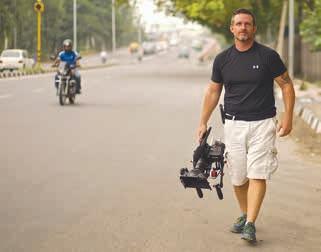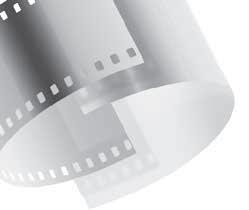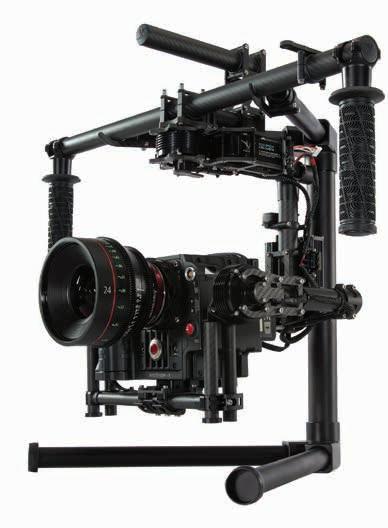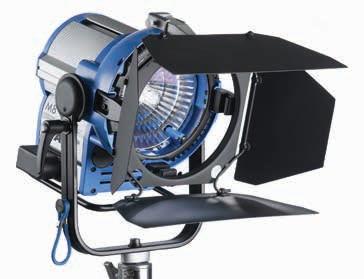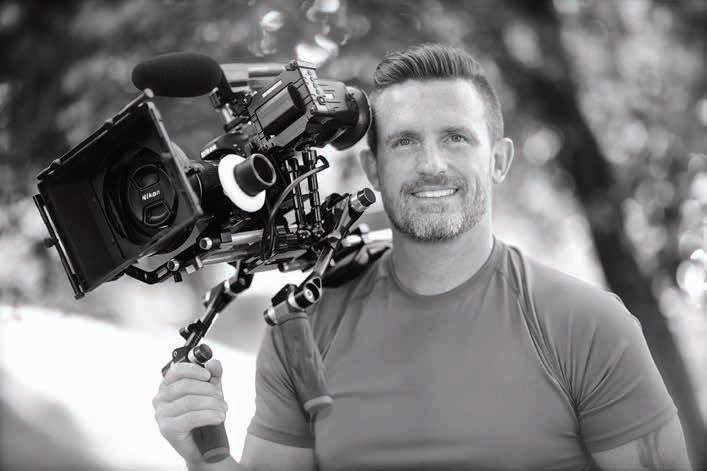
8 minute read
Kirk Neff: Telling Stories with DSLR s
Kirk Neff
In 2003, Barrie, Ont., electrical lineman Dave Gillham was installing new power wires when he was electrocuted arm to arm by 16,000 volts. The accident resulted in the amputation of both Gillham’s arms, but it didn’t stop him from doing what he loved most: playing hockey. The inspirational story was the subject of a 2011 16x9 episode, but while shooting the interview with Gillham, cameraman Kirk Neff felt the poignancy of the man’s story was not coming through.
“I just felt we weren’t really getting the emotion. This was a 40-year-old man, still passionate about playing hockey. I felt this guy really wanted to talk,” Neff, who earlier this year won the CSC Award for News Magazine Cinematography, says. Like most investigative news shows, 16x9 at that time employed a three-camera shooting style, with two cameras trained on the interview subject and one on the news correspondent. In those setups the subject looks off-frame toward the correspondent. But a friend had recently turned Neff onto the Nikon D7000, a successor to the manufacturer’s prosumer D90, and Neff had an idea.
“I went back and simply had Dave look right into the camera. I put one Kino Flo Diva-Light on him with daylight bulbs and just crushed the background with the shallow depth of field, and I centred him up and just said, ‘Tell me your story,’” Neff recalls. The result was a more emotionally impactful testimony. “He just talked. It was almost like therapy to him. I didn’t even have to ask him any more questions. That’s where we get our emotions from. Just talking to no one and looking into the camera.”
Neff’s instinct was that not only would the interview subject talk more freely when speaking direct to camera, but that the DSLR itself would make the subject more comfortable. “The cameras are so
Telling Stories with DSLRs
By Fanen Chiahemen Photos by Brenan Leffler
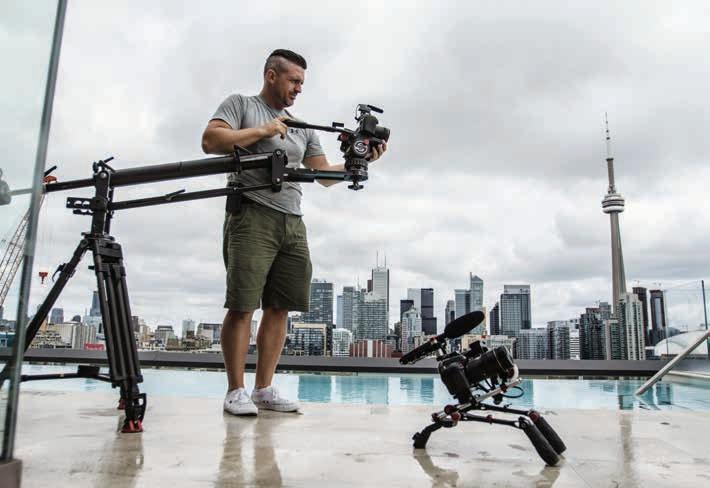
small they’re less intrusive,” he says. “And they give a shallow depth of field, making the background so soft that the viewer can connect with the character. It’s almost like having a conversation with somebody, and I felt that’s what this story needed.”
Moreover, the picture captured with the DSLR was “phenomenal,” Neff says. “I showed it to my producer that night, and she freaked and said it was amazing and that we had to do that all the time.” Indeed, he believes DSLRs have a future in news documentary shooting.
DSLRs are not typically the camera of choice on investigative news shows, which tend to be fast-paced. “With the big ENG cameras you’ve got everything on there: four audio channels; a wireless; your iris, which you can adjust as you go manually; a zoom, and everything’s compatible on the camera. With a DSLR you have to really think about what your next shot is or what your lighting is like in the next shot,” Neff explains.
“Also, when we’re recording in DSLR, it’s compressed,” he continues. “When we put it into the edit suite it takes some time for editors to uncompress it and ingest it into the computer itself. With ENG it’s in the camera, you pull it out and away we go. So it takes a bit of time to get pictures out of DSLRs.”
With that in mind, Neff knew bringing a DSLR on board was taking a chance. “I bring in this little DSLR that has no XLR inputs like a regular ENG camera does,” so at first he used his XD camera, with the wireless receiver mic built in, for audio source, he says. (He later was able to detach the wireless from his XD and added a battery to it, so I didn’t have to carry the XD.) “It was a huge change in workflow for everybody on the show. Now we’re handing in two different SD cards, one being audio and one being the video card, and you have to sync the audio. And in news sometimes you don’t have a lot of time to do that.”
Nevertheless, rather than shy away from using the camera for fear of losing time, Neff found a way to work with it. “Anything can be done,” he says. “We can find a workflow to deal with it and it can happen.” And the technology is constantly being adapted to streamline the workflow, he adds.
Specifically, with the Nikon, Neff says, “you can do a time-lapse where it actually converts it to an MOV file for you right in the camera itself. You don’t have to compile all those photographs together. The camera actually does it in camera for you. It also has adaptable lenses which can really help you on the pictures that you’re looking for.”
Part of Neff’s motivation for integrating DSLRs into news shooting was to distinguish 16x9 from other investigative and documentary TV series. “There are many of them, W5, The Fifth Estate… So how do you make your show different to compete with them?” he says. “For 16x9, I wanted that cinematic feel; I wanted every story to be like it’s a film, not a news story. These are people’s stories. I’m recording people’s history, and I’m very passionate about that.” And DSLRs, he
discovered, could be a big part of passionate storytelling. “People will respond better to that little camera than they do to big cameras because immediately when you come in with a big camera they think news. With the little camera they go, ‘Wow that’s cool,’ and then they forget I’m there. I can put a little monopod on it and go around and film without being in people’s faces.”
Furthermore, DSLRs give him more creative control when applying a style to a shot, Neff says. For example, he is able to use Lensbaby lenses for selective focus in a frame, an idea he got from using Nikon’s tilt shift lenses. “That’s creative,” he says. “Instead of going back to the station and saying to the editor, ‘Can you just focus on this, or soften the edges?’ Well, maybe the editor doesn’t have time or is busy doing something else. Now I can be creative and do everything in camera. And when I give it to the editor it’s already done for him.”
DSLRs are also more forgiving when it comes to shooting documents, which are a staple on investigative news shows. “Documents have always been a hard thing to shoot,” Neff says. “You can’t really get the angle you want. I’ve done lots of documents now using different lenses with these cameras. I can actually defocus everything I want and only focus on what I want the viewer to look at. And you’d never be able to do that with a regular HD camera.”
The cameras added benefit is their shallow depth offield, Neff says. “When we go to do interviews, we’re basically going into people’s houses and making it a studio. We’re working with what they already have set up. With a regular HD camera, you interview the subject, but everything in the background is going to be almost in focus because I can’t get that shallow depth of field because I either have to be farther away or have to gain up because it’s dark in the house,” Neff explains. “If I bring in my DSLR I can stay in one spot and I can just use my different lenses. And I can crush the background and soften out the background so it’s not as distracting as a white wall or a tree. I can focus on the subject’s answers.” When he wants to make a shoot look like a “huge production,” he can do so by simply putting his DSLR on a slider and doing vertical or horizontal pans or tilts, he says. “Basically, if I had my big camera I wouldn’t be able to do it because I’d have to have a long rail or a heavy rail. And with a slider I carry it in my luggage and it comes with me everywhere,” Neff continues. It is worth noting that Neff has a signature camera rig with the Montreal-based camera equipment company SHAPE. After cultivating a relationship with the company over a two-year period, Neff helped test early prototypes of a small DSLR rig the company was developing. “Once I met them in Montreal, we were looking at the rig again and, jokingly, I said my name would look good on the top, and next thing I know I was in the boardroom talking about it,” Neff recalls.

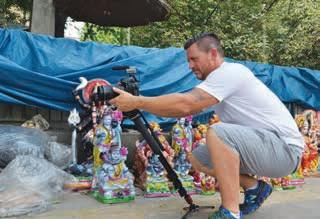
When it comes to lighting, Neff leans heavily on available light. “I mean, nobody is brighter than God,” he says, laughing. “A lot of the time, when I go into a room and people see windows they say, ‘We can’t shoot in here because there are windows.’ I immediately speak up and say, ‘You know what? I can work with these windows.’ Because in film those whites are soft. I can make them soft. When you’re shooting in HD they’re harsh, peaking. I think just the natural available light is beautiful. I don’t even have a sun gun on my cameras. I shoot outside with available light all the time. Indoors I’ll also use LED Filoni, Diva lights and I like to use a lot of daylight bulbs. It really brings out the person’s features. It’s beautiful.”
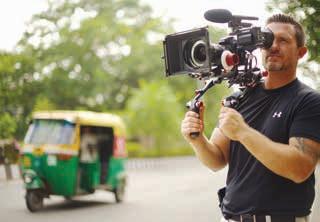
Neff – who has since upgraded to Nikon’s D800 and D600 “because they’re fullframe cameras, which gives a bit more depth of field” – has spoken at newsrooms and photography shows across Canada about what an asset the DSLR can be in creative news stories.
“I imagine in the next couple of years every ENG camera person will have at least one DSLR in their car shooting features for news, bumpers, and for creative things as time lapses. I think it’ll be integrated into news stories,” he says.
